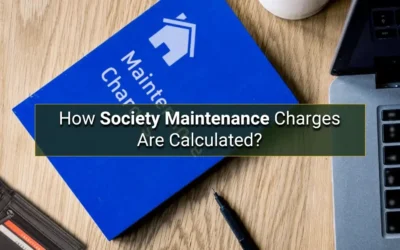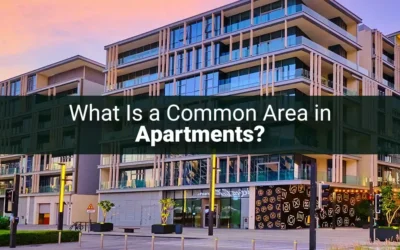WPC full form is Wood Plastic Composite – a modern material that is gaining popularity in today’s building and interior design environments. Innovation is not only welcomed but also anticipated, as homeowners, architects, and builders constantly seek materials that blend sustainability, strength, and style.
Presenting WPC, a cutting-edge material that is gradually becoming more and more well-liked in commercial, industrial, and residential settings.
Everything you need to know about WPC will be covered in this blog, including its full shape, applications, sizes available, benefits, drawbacks, and, of course, the crucial WPC pricing.
What is the Full Form of WPC?
Let us begin at the outset. The acronym WPC stands for Wood Plastic Composite. This hybrid material is created by combining thermoplastics such as polyvinyl chloride (PVC), polyethylene (PE), and polypropylene (PP) with wood flour or fibres. Heat and pressure are used to combine these ingredients to create a material that resembles wood but functions more like plastic.
WPC was created to address a straightforward but persistent problem in the construction sector: how to mimic the warmth of wood while getting over its inherent drawbacks, which include warping, termite infestation, water absorption, and frequent upkeep.
Also Read: EOI in Real Estate: Smart First Step or Just a Formality?
What is WPC Material Made Of?
Now that we know the full form, let’s explore what WPC material consists of. The core composition includes:
- Wood fibre or wood flour (typically 50–70%)
- Plastic polymers (20–30%)
- Additives (5–10%): These include UV stabilizers, colourants, lubricants, and foaming agents.
While the plastic guarantees resistance to damp, wear, and degradation, the wood component gives the material a natural appearance and feel. The end product is an environmentally friendly, structurally sound material that may be used both indoors and outdoors.
WPC is an environmentally friendly option for contemporary building because many manufacturers use recycled plastic and wood in their manufacturing processes.
Where and How It’s Used?
Outdoor Flooring and Decking
WPC decks are ideal for terraces, balconies, and poolside flooring since they are UV-stable, water-resistant, and non-slip. Compared to wood, they have a longer service life and can tolerate severe weather.
Wall Cladding
WPC is utilized as a cladding material for both interior and exterior walls. It resists fungus, offers insulation, and requires little maintenance to maintain its finish for years.
False Partitions and Ceilings
Because WPC boards are lightweight and simple to install, they make a great option for non-load-bearing ceilings and walls.
Door and Window Frames
WPC is perfect for frames and even door panels in kitchens, bathrooms, and basements since it doesn’t expand or contract in response to humidity like timber does.
Modular furniture
WPC has established a solid presence in the furniture sector, specializing in kitchen cabinets and closets. In many situations, it is better than MDF or plywood because of its resilience to termites and water.
Fencing and Pergolas
WPC is a popular material for pergolas, gazebos, fencing, and even benches in landscaping and outdoor design since it can replicate the appearance of wood while surviving the weather.
Sizes, Thicknesses, and Customization Options
WPC boards and sheets are manufactured in a wide range of dimensions and thicknesses, depending on their intended use.
Common Sheet Sizes:
- 8 ft x 4 ft (2440 mm x 1220 mm) – Standard for panels and partitions
- 9 ft x 6 ft or Custom Sizes – Available for larger installations or specific applications
Thickness Options:
- 6 mm to 12 mm – Ideal for false ceilings and panelling
- 16 mm to 25 mm – Suitable for doors, frames, and cabinets
- 30 mm and above – Used in load-sharing decorative structures like pergolas
WPC can also be laminated, embossed, or digitally printed to match desired themes and aesthetics.
Key Advantages of WPC

Why is WPC such a popular choice for contemporary construction?
Moisture Resistance: WPC boards are perfect for wet environments because they don’t absorb water.
Termite and Pest Proof: It is impervious to insects thanks to the plastic component.
Durability: Unlike natural wood, WPC doesn’t splinter, distort, or split over time.
Low Maintenance: Termite treatments, varnishing, and polishing are not required regularly.
Aesthetic Appeal: To fit any décor, it comes in a variety of textures and finishes.
Eco-Friendly: Lessens the impact on the environment by frequently employing recycled plastic and wood.
Read More: FSI Full Form, Meaning & FAR Difference in Construction
Are There Any Drawbacks?
WPC offers several advantages, but it’s vital to look at the big picture.
Cost: Up front, WPC may be more costly than conventional plywood or MDF.
Less Flexible: In complex designs, it might not provide the same workability or bend tolerance as pure wood.
Not for Heavy Load-Bearing: WPC is structurally sound, although it is not appropriate for main support beams or columns that are subjected to heavy loads.
Nevertheless, it performs quite reliably in semi-structural and non-load-bearing functions.
What is the WPC Price?
The pricing of WPC is one of the most frequently asked questions by both builders and homeowners.
Some variables, including thickness, size, density, finish, and brand, affect WPC’s price. Here’s a ballpark figure to help you plan:
| Thickness | Usage | Approx. Price (₹/sq. ft.) |
| 6 mm – 12 mm | Wall panels, ceiling boards | ₹70 – ₹120 |
| 16 mm – 25 mm | Furniture, doors, frames | ₹130 – ₹220 |
| 30 mm+ | Pergolas, partitions | ₹250 – ₹350 |
Note: Location, brand, level of customization, and whether or not installation is included can all affect price.
WPC may seem more expensive initially than more conventional options, but over time, its extended lifespan and low maintenance costs more than make up for it.
WPC vs Traditional Materials
Long-term value is more important than price when deciding between WPC and more conventional options like plywood, MDF, or natural wood. Wood Plastic Composite, or WPC, is notable for its dimensional stability, termite protection, and moisture resistance.
It does not warp or swell like plywood does. It is more resilient to deterioration and stronger than MDF.
Furthermore, WPC requires far less upkeep than solid wood, despite the latter’s superior appearance. Therefore, WPC is challenging the established competitors in the market for contemporary exteriors and interiors, where durability is just as important as beauty.
Overall
Two crucial components of every contemporary building project are performance and aesthetics, and Wood Plastic Composite (WPC) offers a harmonious combination of both. Because of its versatility and dependability, it may be used for everything from outdoor constructions and modular furniture to cladding and decking.
Understanding the WPC full form, its material, and uses is just the beginning. How well it functions in actual settings is what gives it its true worth. In both residential and commercial settings, WPC is a practical, environmentally friendly alternative that is resistant to decay, wetness, and insects.
Furthermore, WPC is more than simply a product; it’s a solution, with an expanding variety of textures, sizes, and applications.




